Where are the golden locations for the cell phone charging station business?
The global number of smartphone users and daily usage time continues to grow, making “battery anxiety” a common need. To meet users’ emergency charging demands, investors deploy shared power banks in shopping malls, restaurants, and other public venues, allowing users to rent and return power banks at any network point under the same brand. The more frequently users rent, the greater the revenue investors can generate. When setting up shared charging station networks, investors should evaluate multiple factors—such as foot traffic scale, user dwell time, and high power consumption scenarios—to scientifically select the optimal deployment sites.
1. Where are phone charging stations usually installed?
Phone charging stations are typically placed in shopping centers, restaurants, cafés, and bars—venues where people tend to stay for extended periods. Whether it’s friends dining together or business meetings, mobile phones are used intensively for socializing, entertainment, and payment, leading to rapid battery consumption and an urgent demand for charging.
At international airports, railway stations, and subway stations—major transportation hubs—people rely heavily on their phones to handle tickets, check information, communicate, or pass the time while waiting for transfers or long journeys. As a result, phones drain quickly, and users need fast charging to avoid disruptions to their travel plans.
In universities, hospitals, and other public service facilities, as well as in tourist attractions, international expos, and music festivals with heavy foot traffic, users stay for long periods and use their phones frequently for taking photos, recording videos, and live streaming. This leads to high power consumption and a greater likelihood of low battery levels.
Deploying shared power banks in these core scenarios ensures full coverage of rental demand. By establishing a high-density network of shared charging stations, investors can increase rental revenues and create large-scale network effects that help them capture market opportunities quickly.
2. How can investors accurately identify golden locations for mobile charging stations?
Deploying shared power banks in different venues requires tailored strategies. In small consumer locations like restaurants and convenience stores, investors can install modular charging stations that support flexible configurations of 4, 8, 12, 16, 20, or 24 slots. High-frequency rental points can be upgraded to 24-slot modular stations. Shared charging stations can be equipped with touch or non-touch advertising screens, allowing investors to earn additional income through brand advertising. For venues with limited space, floor-standing, lightbox-style, or wall-mounted display racks are available to simplify installation and reduce placement costs.
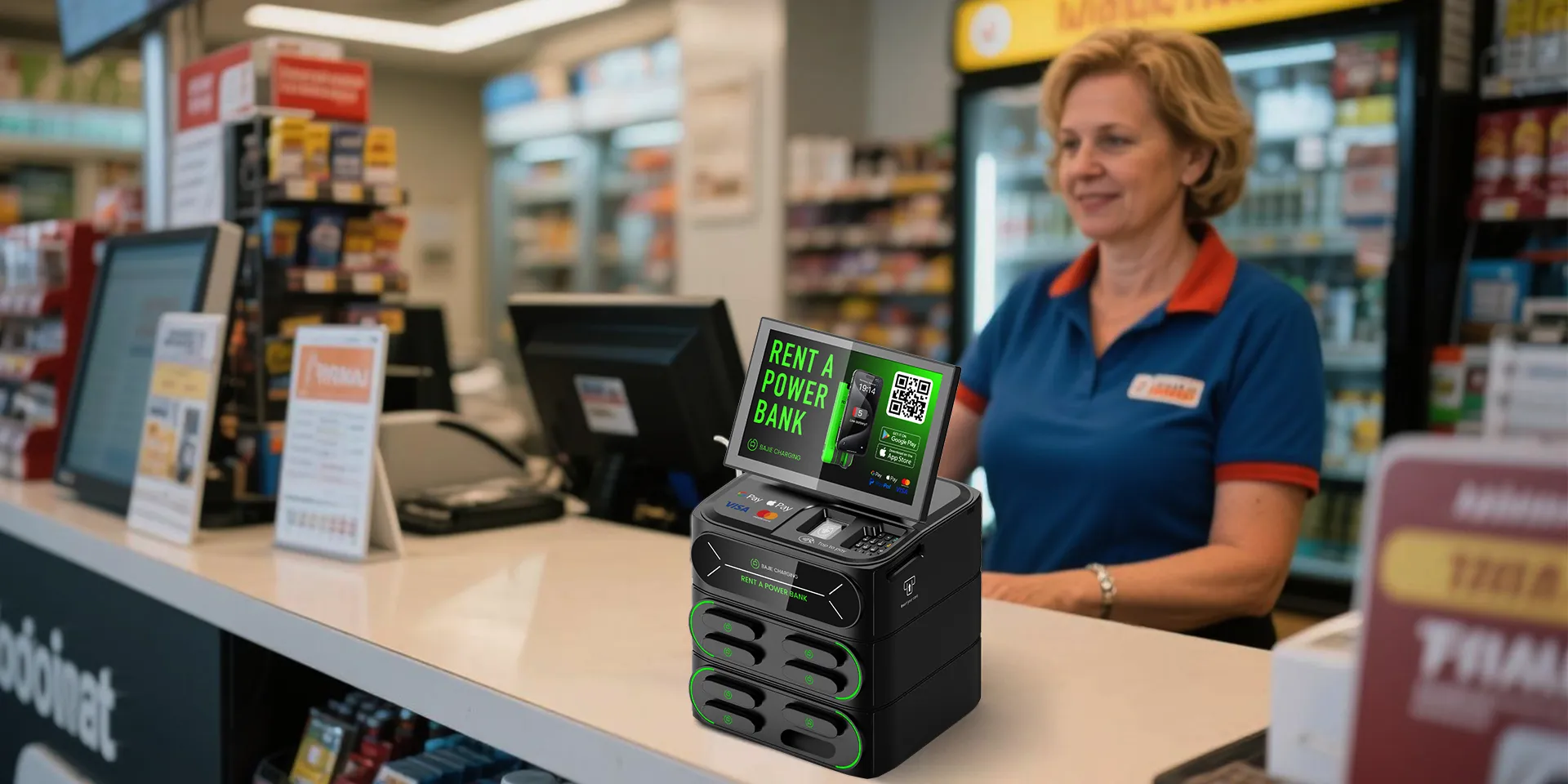 Bars, KTVs, and nightclubs—nighttime entertainment venues—are ideal for LED charging stations, making it easy for users to spot and rent shared power banks even in dim environments, thus improving rental rates. To accommodate regional payment preferences, users can rent via multiple methods such as card swiping or QR code scanning. Charging stations can be embedded or externally equipped with various POS systems to support card-based rental in markets where card payment is dominant.
Bars, KTVs, and nightclubs—nighttime entertainment venues—are ideal for LED charging stations, making it easy for users to spot and rent shared power banks even in dim environments, thus improving rental rates. To accommodate regional payment preferences, users can rent via multiple methods such as card swiping or QR code scanning. Charging stations can be embedded or externally equipped with various POS systems to support card-based rental in markets where card payment is dominant.
For outdoor scenarios like music festivals and sports events, waterproof shared charging stations can be deployed to ensure normal operation even on rainy days, expanding cooperation opportunities in outdoor venues. In ultra-high-traffic sites such as international airports and expos, 72-slot to 216-slot large modular cabinets can meet extremely frequent rental needs, helping investors secure prime locations and build brand influence locally.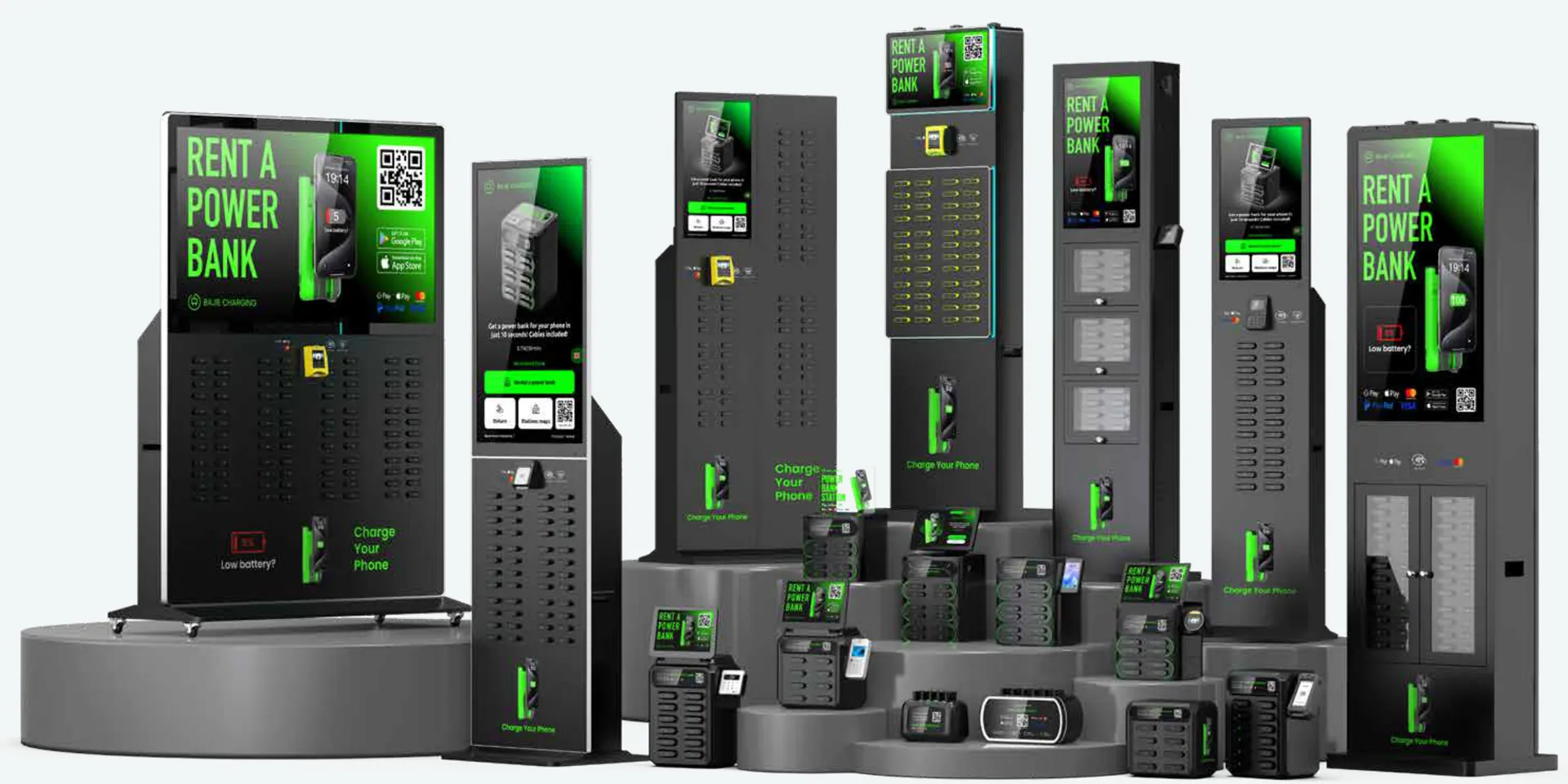
3. How can investors quickly create a network effect?
Countries such as the United States, Brazil, and Japan have vibrant offline consumer markets and massive restaurant sectors, offering great potential for shared power bank businesses. According to reports from the USDA and GAIN, Brazil has over 1.04 million food service establishments—including restaurants, cafés, and bars—providing abundant consumer scenarios and high foot traffic, which create favorable conditions for rapid growth of the shared charging market.
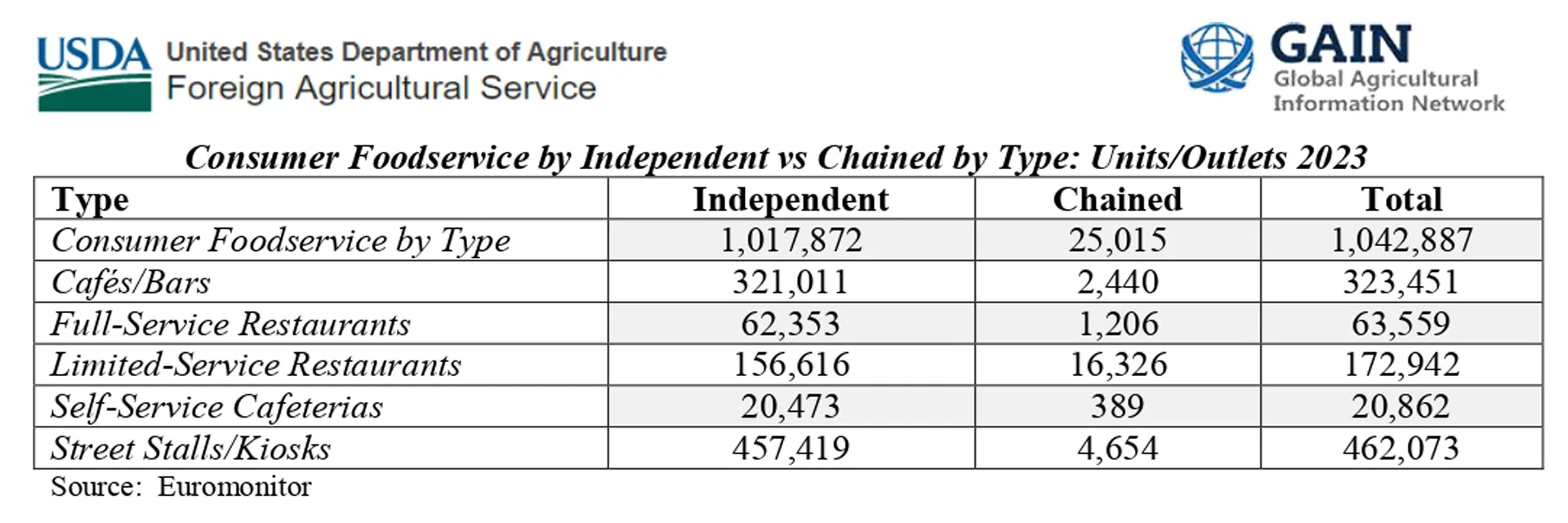 Circana statistics show that Japan has approximately 998,000 food service outlets nationwide. With highly concentrated urban business ecosystems and frequent outdoor consumption habits, Japan’s shared power bank market continues to expand.
Circana statistics show that Japan has approximately 998,000 food service outlets nationwide. With highly concentrated urban business ecosystems and frequent outdoor consumption habits, Japan’s shared power bank market continues to expand.
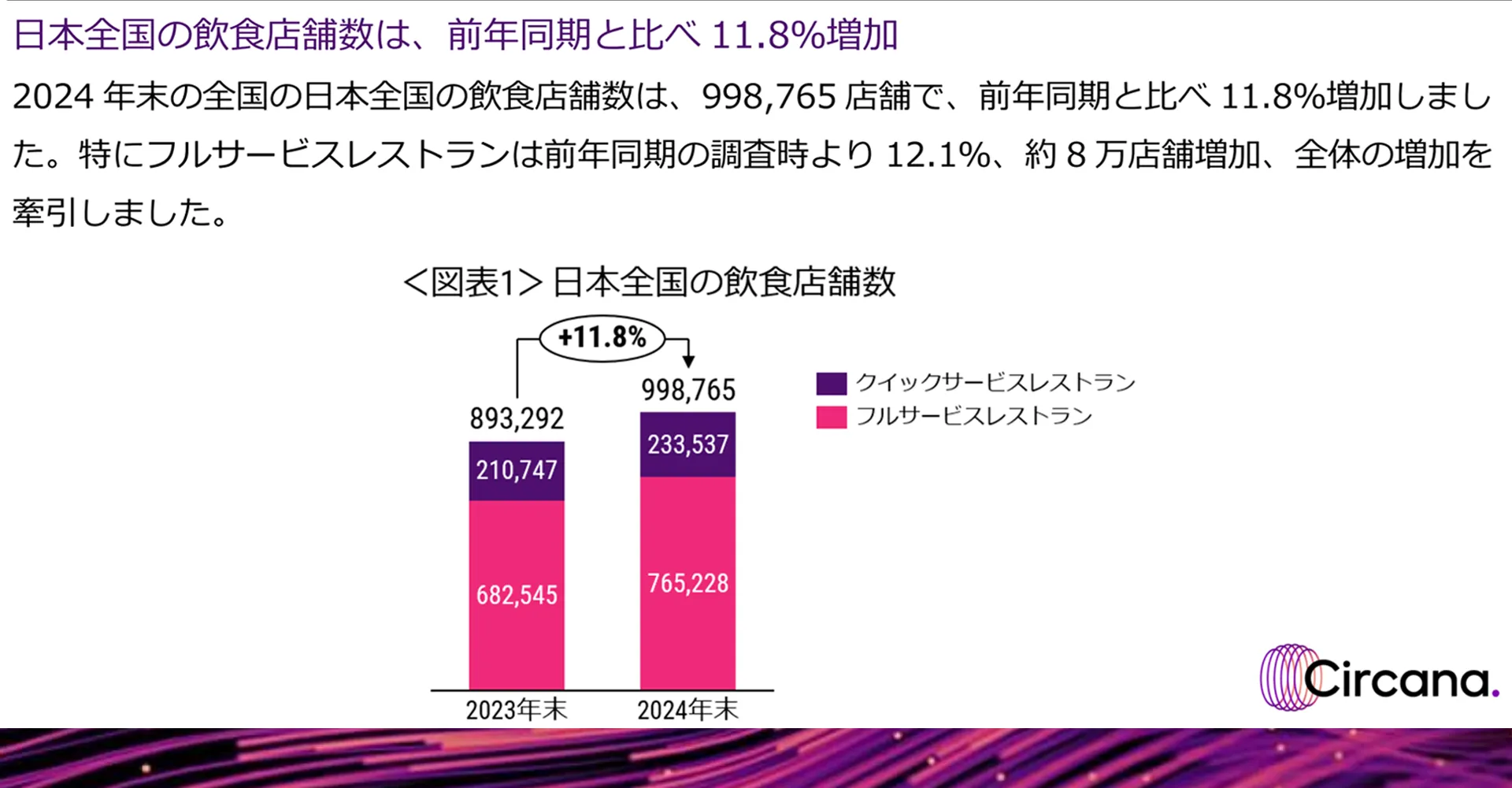 According to Georgia Tech data, the United States has around 705,000 restaurants. Customers tend to stay for long durations, leading to frequent charging needs that help increase equipment rental rates and per-site revenue—ultimately driving higher return potential for investors.
According to Georgia Tech data, the United States has around 705,000 restaurants. Customers tend to stay for long durations, leading to frequent charging needs that help increase equipment rental rates and per-site revenue—ultimately driving higher return potential for investors.
 The compact 8-slot modular shared power bank station supports various installation options—standing or wall-mounted—allowing for quick deployment in restaurants, cafés, and bars to achieve high-density scene coverage effortlessly.
The compact 8-slot modular shared power bank station supports various installation options—standing or wall-mounted—allowing for quick deployment in restaurants, cafés, and bars to achieve high-density scene coverage effortlessly.
Summary
Golden sites for power bank vending machines must precisely align with high-frequency user demand scenarios. In places like restaurants and hospitals, users stay for extended periods. In high-traffic transportation hubs such as airports, train stations, and subway stations, travelers need emergency charging during their journeys. At music festivals and scenic spots, users frequently operate their phones for photography, navigation, and other functions, creating an urgent need for power.
Different deployment strategies are required to suit different scenarios. In small consumer venues like restaurants and convenience stores, modular charging stations can flexibly meet rental demands. Bars and KTVs are ideal for LED charging stations to boost nighttime rentals. Outdoor venues such as music festivals and sports events require waterproof shared power banks for reliable operation. For ultra-high-frequency sites like international airports, 72-slot to 216-slot large combination stations meet heavy rental demands.
A diversified deployment strategy for mobile charging stations helps investors precisely penetrate various consumption scenes. Investors should prioritize key hubs that can easily achieve scale effects and allow users to rent and return devices conveniently. By establishing a dense, wide-reaching service network, investors can reinforce user habits, quickly capture market awareness through network effects, and gain a lasting competitive edge in their local phone charging station markets.
November 10, 2025
 Where are the golden locations for the cell phone charging station business?
Where are the golden locations for the cell phone charging station business?
 Seeking maximum return on investment? How can a phone charging locker reduce costs and increase profits?
Seeking maximum return on investment? How can a phone charging locker reduce costs and increase profits?
 Can the capacity be upgraded without changing the cabinet? How does the mobile charging station achieve flexible expansion from 72 to 216 slots?
Can the capacity be upgraded without changing the cabinet? How does the mobile charging station achieve flexible expansion from 72 to 216 slots?
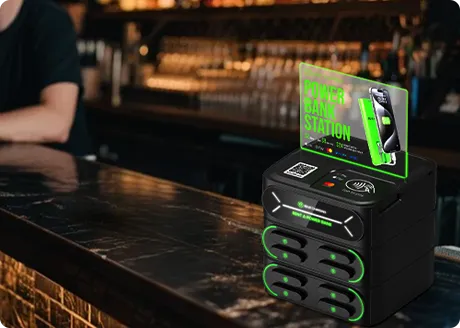 How can the LED advertising shared power bank effectively increase nighttime rental rates?
How can the LED advertising shared power bank effectively increase nighttime rental rates?
 How does the Modular Power Bank Station enable rapid replication and help investors seize market opportunities?
How does the Modular Power Bank Station enable rapid replication and help investors seize market opportunities?
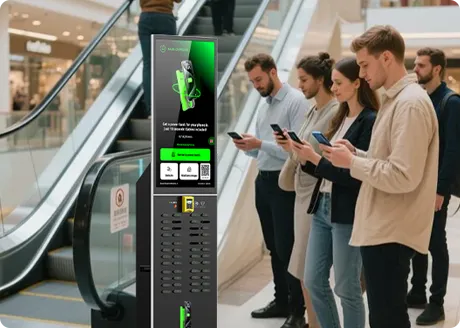 How can investors make money through the shared power bank business?
How can investors make money through the shared power bank business?